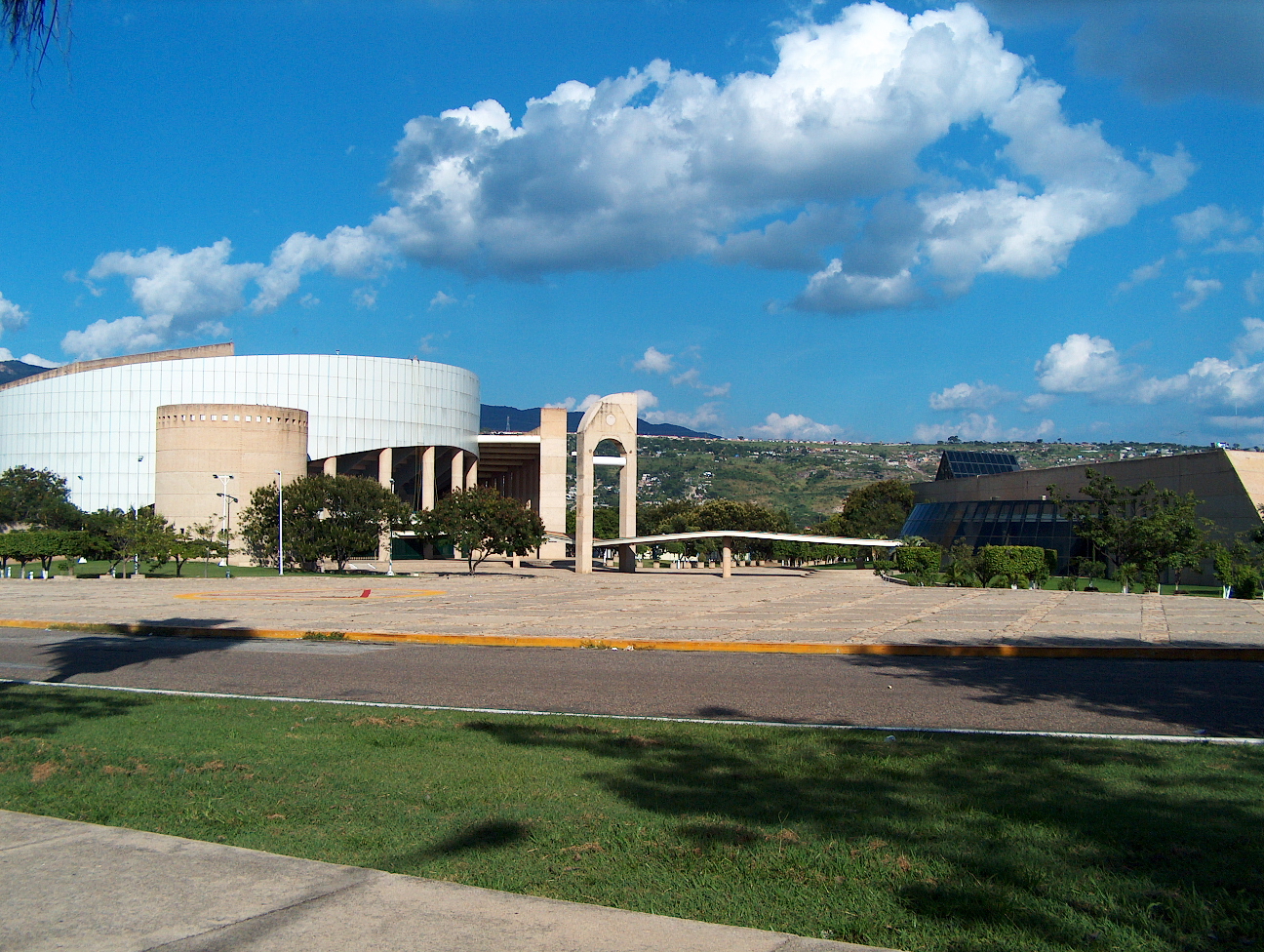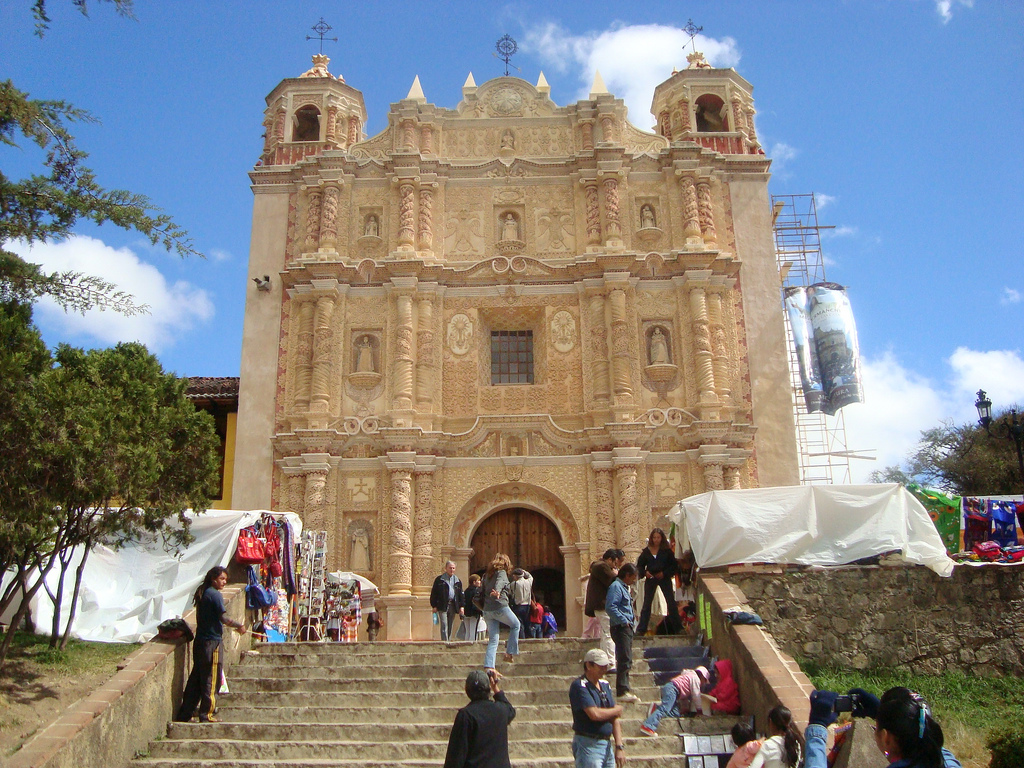|
Tuxtla Gutiérrez
Tuxtla Gutiérrez (, ) is the capital and the largest city of the Mexican southeastern state of Chiapas. It is the seat of the municipality of the same name, the most developed and populated in the state. A busy government, commercial and services-oriented city, Tuxtla (as it is commonly known) had one of the fastest-growing rates in Mexico in the last 40 years. Unlike many other areas in Chiapas, it is not a major tourist attraction, but a transportation hub for tourists coming into the state, with a large airport and a bus terminal. History The Zoques made the first pre-Hispanic settlement at the site. They named the valley area name ''Coyatoc'', which means 'land or house of rabbits'. The Aztecs intruded into the area between 1486 and 1505 and named it ''Tuchtlan'', which means the same thing in their language. After the Spanish conquest of the Aztec Empire, and the subjugation of the local Chiapan people in 1528, the Dominicans constructed a monastery in nearby Tecpat ... [...More Info...] [...Related Items...] OR: [Wikipedia] [Google] [Baidu] |
Polyforum Chiapas
The Centro de Convenciones y Polyforum Chiapas, also known as Poliforum Mesoamericano, is a 3,875-seat indoor arena located in Tuxtla Gutiérrez, Mexico. It was built in 1994. It is used for concerts, basketball, lucha libre, Convention (meeting), conventions and other special events. The Polyforum contains of total space. Unlike most arenas built in the 1990s, the Polyforum contains a permanent stage allowing it to also be used for stage shows. Seating is divided between permanent seats on the risers and removable floor seating The Polyforum is the flagship facility of the Centro de Convenciones Chiapas which also includes two exhibit halls, one measuring of space and a grand hall measuring of space, for a grand total of of space. There are also three meeting rooms, a 100-seat auditorium, an on-site restaurant, and various high-rise buildings with governmental offices. External links * Tuxtla Gutiérrez Guide to Trade Exhibition Venues Convention centers in Mexico Mu ... [...More Info...] [...Related Items...] OR: [Wikipedia] [Google] [Baidu] |
Aztec
The Aztecs () were a Mesoamerican culture that flourished in central Mexico in the post-classic period from 1300 to 1521. The Aztec people included different Indigenous peoples of Mexico, ethnic groups of central Mexico, particularly those groups who spoke the Nahuatl, Nahuatl language and who dominated large parts of Mesoamerica from the 14th to the 16th centuries. Aztec culture was organized into city-states (''altepetl''), some of which joined to form alliances, political confederations, or empires. The Aztec Empire was a confederation of three city-states established in 1427: Tenochtitlan, city-state of the Mexica or Tenochca; Texcoco (altepetl), Texcoco; and Tlacopan, previously part of the Tepanec empire, whose dominant power was Azcapotzalco (altepetl), Azcapotzalco. Although the term Aztecs is often narrowly restricted to the Mexica of Tenochtitlan, it is also broadly used to refer to Nahuas, Nahua polities or peoples of central Pre-Columbian Mexico, Mexico in the preh ... [...More Info...] [...Related Items...] OR: [Wikipedia] [Google] [Baidu] |
San Andrés Accords
The San Andrés Accords are agreements reached between the Zapatista Army of National Liberation and the Mexico, Mexican government, at that time headed by President Ernesto Zedillo. The accords were signed on February 16, 1996, in San Andrés Larráinzar, Chiapas, and granted autonomy, recognition, and rights to the indigenous population of Mexico. The accords were based on the five principles of basic respect for the diversity of the indigenous population of Chiapas, the conservation of the natural resources within the territories used and occupied by indigenous peoples, a greater participation of indigenous communities in the decisions and control of public expenditures, the participation of indigenous communities in determining their own development plans, and the autonomy of indigenous communities and their right of free determination in the framework of the State. They were discussed and approved by representatives of all the indigenous communities of Mexico, and translated ... [...More Info...] [...Related Items...] OR: [Wikipedia] [Google] [Baidu] |
Zapatista Uprising
On January 1, 1994, the Zapatista Army of National Liberation (EZLN) coordinated a 12-day Zapatista uprising in the state of Chiapas, Mexico in protest of NAFTA's enactment. The revolt gathered international attention. Background Disease, enslavement, and exploitation have affected and devastated many American Indigenous communities, and the effects of colonization have continued to affect Mexican Indigenous communities. Indigenous people make up 15% of Mexico's population, and in 2011, the demographic also made up the majority of the 18% of Mexico's population living with food insecurity. About a third of people in Mexico's southernmost state of Chiapas identify as indigenous. The state has the second highest poverty rate following the state of Guerrero. About half of the Indigenous population in Chiapas reported no income in the 2010 census with another 42% of individuals earning less than $5 a day. Indigenous people in the state have also been impacted by malnutrition as well ... [...More Info...] [...Related Items...] OR: [Wikipedia] [Google] [Baidu] |
John Paul II
Pope John Paul II ( la, Ioannes Paulus II; it, Giovanni Paolo II; pl, Jan Paweł II; born Karol Józef Wojtyła ; 18 May 19202 April 2005) was the head of the Catholic Church and sovereign of the Vatican City State from 1978 until his death in April 2005, and was later canonised as Pope Saint John Paul II. He was elected pope by the second papal conclave of 1978, which was called after John Paul I, who had been elected in August to succeed Pope Paul VI, died after 33 days. Cardinal Wojtyła was elected on the third day of the conclave and adopted the name of his predecessor in tribute to him. Born in Poland, John Paul II was the first non-Italian pope since Adrian VI in the 16th century and the second-longest-serving pope after Pius IX in modern history. John Paul II attempted to improve the Catholic Church's relations with Judaism, Islam, and the Eastern Orthodox Church. He maintained the church's previous positions on such matters as abortion, artificia ... [...More Info...] [...Related Items...] OR: [Wikipedia] [Google] [Baidu] |
Roman Catholic Archdiocese Of Tuxtla
The Roman Catholic Archdiocese of Tuxtla ( la, Archidioecesis Tuxtlensis) is a Metropolitan Archdiocese based in Tuxtla, Chiapas, Mexico. It is responsible for the suffragan dioceses of Tapachula and Las Casas. Benedict XVI elevated it to the level of archdiocese on 25 November 2006. Masses in Tzotzil and Tzeltal languages In 2013, Pope Francis approved translations of the prayers for Mass and the celebration of sacraments into Tzotzil and Tzeltal. The translations include "the prayers used for Mass, marriage, baptisms, confirmations, confessions, ordinations and the anointing of the sick Bishop Arizmendi said Oct. 6 that the texts, which took approximately eight years to translate, would be used in his diocese and the neighboring Archdiocese of Tuxtla. Mass has been celebrated in the diocese in recent years with the assistance of translators—except during homilies—Bishop Arizmendi said in an article in the newspaper La Jornada. Bishops Ordinaries * José Trinidad Sep ... [...More Info...] [...Related Items...] OR: [Wikipedia] [Google] [Baidu] |
Venustiano Carranza
José Venustiano Carranza de la Garza (; 29 December 1859 – 21 May 1920) was a Mexican wealthy land owner and politician who was Governor of Coahuila when the constitutionally elected president Francisco I. Madero was overthrown in a February 1913 right-wing military coup. Known as the ''Primer Jefe'' or "First Chief" of the Constitutionalist faction in the Mexican Revolution, Carranza was a shrewd civilian politician. He supported Madero's challenge to the Díaz regime in the 1910 elections, but became a critic of Madero once Díaz was overthrown in May 1911. Madero did appoint him the governor of Coahuila. When Madero was murdered during the February 1913 counter-revolutionary coup, Carranza drew up the Plan of Guadalupe, a purely political plan to oust Madero's usurper, General Victoriano Huerta. As a sitting governor when Madero was overthrown, Carranza held legitimate power and he became the leader of the northern coalition opposed to Huerta. The Constitutionalist facti ... [...More Info...] [...Related Items...] OR: [Wikipedia] [Google] [Baidu] |
Mexican Revolution
The Mexican Revolution ( es, Revolución Mexicana) was an extended sequence of armed regional conflicts in Mexico from approximately 1910 to 1920. It has been called "the defining event of modern Mexican history". It resulted in the destruction of the Federal Army and its replacement by a revolutionary army, and the transformation of Mexican culture and Federal government of Mexico, government. The northern Constitutionalists in the Mexican Revolution, Constitutionalist faction prevailed on the battlefield and drafted the present-day Constitution of Mexico, which aimed to create a strong central government. Revolutionary generals held power from 1920 to 1940. The revolutionary conflict was primarily a civil war, but foreign powers, having important economic and strategic interests in Mexico, figured in the outcome of Mexico's power struggles. The United States involvement in the Mexican Revolution, United States played an especially significant role. Although the decades-long r ... [...More Info...] [...Related Items...] OR: [Wikipedia] [Google] [Baidu] |
San Cristóbal De Las Casas
San Cristóbal de las Casas (), also known by its native Tzotzil name, Jovel (), is a town and municipality located in the Central Highlands region of the Mexican state of Chiapas. It was the capital of the state until 1892, and is still considered the cultural capital of Chiapas. The municipality is mostly made up of mountainous terrain, but the city sits in a small valley surrounded by hills. The city’s center maintains its Spanish colonial layout and much of its architecture, with red tile roofs, cobblestone streets and wrought iron balconies often with flowers. Most of the city’s economy is based on commerce, services and tourism. Tourism is based on the city’s history, culture and indigenous population, although the tourism itself has affected the city, giving it foreign elements. Major landmarks of the city include the Cathedral, the Santo Domingo church with its large open air crafts market and the Casa Na Bolom museum. The municipality has suffered severe defores ... [...More Info...] [...Related Items...] OR: [Wikipedia] [Google] [Baidu] |
Guatemala
Guatemala ( ; ), officially the Republic of Guatemala ( es, República de Guatemala, links=no), is a country in Central America. It is bordered to the north and west by Mexico; to the northeast by Belize and the Caribbean; to the east by Honduras; to the southeast by El Salvador and to the south by the Pacific Ocean. With an estimated population of around million, Guatemala is the most populous country in Central America and the 11th most populous country in the Americas. It is a representative democracy with its capital and largest city being Nueva Guatemala de la Asunción, also known as Guatemala City, the most populous city in Central America. The territory of modern Guatemala hosted the core of the Maya civilization, which extended across Mesoamerica. In the 16th century, most of this area was conquered by the Spanish and claimed as part of the viceroyalty of New Spain. Guatemala attained independence in 1821 from Spain and Mexico. In 1823, it became part of the Fe ... [...More Info...] [...Related Items...] OR: [Wikipedia] [Google] [Baidu] |
King Of Spain
, coatofarms = File:Coat_of_Arms_of_Spanish_Monarch.svg , coatofarms_article = Coat of arms of the King of Spain , image = Felipe_VI_in_2020_(cropped).jpg , incumbent = Felipe VI , incumbentsince = 19 June 2014 , his/her = His , heir_presumptive = Leonor, Princess of Asturias , first_monarch = Isabella I of Castile and Ferdinand II of Aragon (Catholic Monarchs of Spain) , date = , appointer = Hereditary , residence = Royal Palace of Madrid (official)Palace of Zarzuela (private) , website The Spanish Monarchy The monarchy of Spain or Spanish monarchy ( es, Monarquía Española), constitutionally referred to as The Crown ( es, La Corona), is a constitutional political institution, institution and the highest office of Spain. The monarchy comprises the reigning List of Spanish monarchs, monarch, his or her family, and the Royal Household of Spain, royal household organizat ... [...More Info...] [...Related Items...] OR: [Wikipedia] [Google] [Baidu] |






